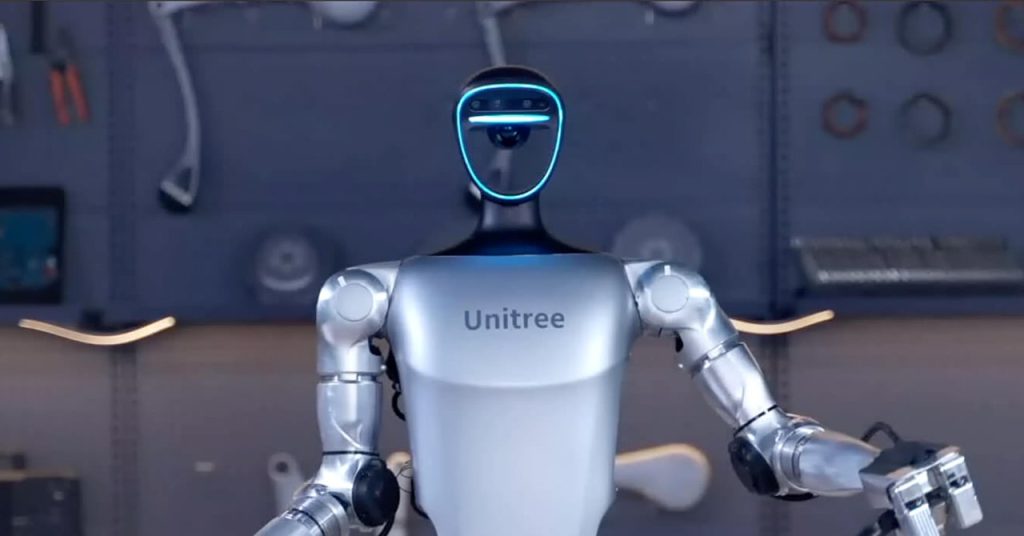Introducing Unitree’s $16,000 Humanoid Robot
Overview
Unitree, known for its budget-friendly robotics, has launched a new humanoid robot priced at $16,000. Despite some language barriers in their promotional materials, Unitree offers impressive robots for the price. You might recognize them from their Spot knockoff, the Unitree Go2.
Specifications
The robot features a 9,000-mAh battery that lasts about two hours. Its weight varies between 35 kg and 47 kg (77 to 104 pounds) depending on the source. It includes an Intel RealSense D435 depth camera and a Livox-MID360 lidar puck. The lidar is uniquely positioned under the robot’s “brain,” peering through the front glass face.
Performance
The robot can run at 2 meters per second (4.4 miles per hour), equivalent to a slow jog. It can lift up to 2 kg (4.4 pounds) and has joint ranges between 160 and 310 degrees. However, programming it to perform useful tasks requires significant effort, likely using the Unitree SDK and the developer documentation for the Unitree H1.
Real-World Testing
Unitree’s promotional video shows the robot attempting various tasks with mixed success. It tries to crack a walnut, open a Coke bottle, flip a piece of bread, and use a soldering iron, but often ends up making a mess. The video notes that some functions are still in development and testing.
“Some of the sample functions of this video are still being developed and tested.”
Design and Functionality
The robot stands about 4 feet tall, making it suitable for tasks at a sit-down table rather than a standard kitchen countertop. Despite the $16,000 price tag, it may not come with functional hands. Some video segments show three-fingered hands, while others display nonfunctional placeholder hands, such as mechanics gloves. The spec sheet for the $16,000 model lists no details under “Single Hand Degrees of Freedom,” suggesting these gloves are empty. The “G1 EDU” version, with an unknown price, includes features like a “Three-fingered dexterous hand” and optional “tactile sensor arrays” to prevent crushing objects.
This story originally appeared on Ars Technica.
